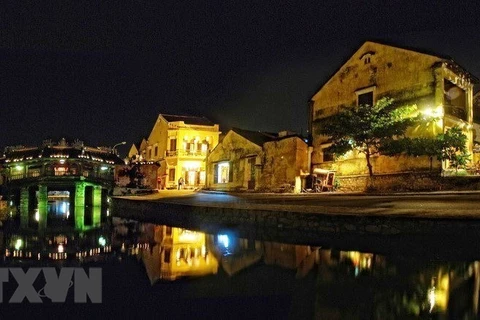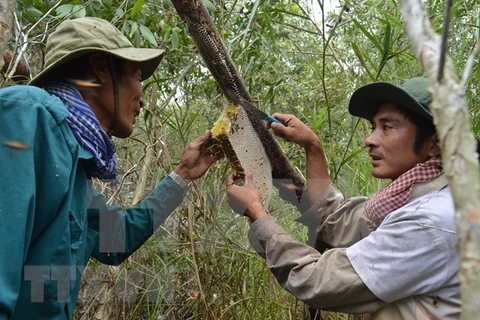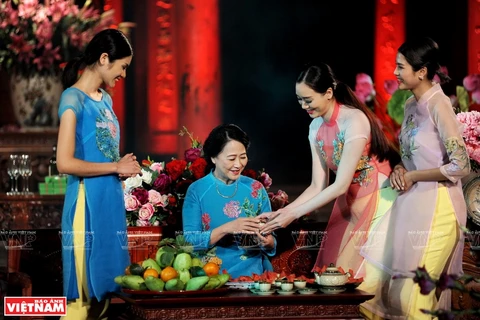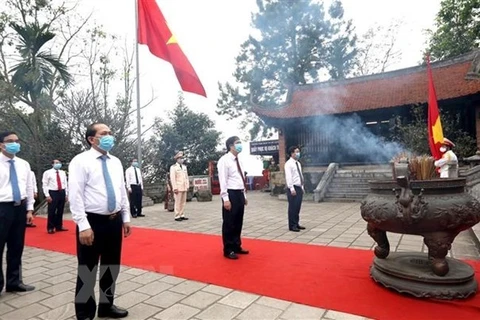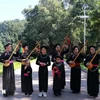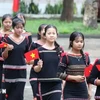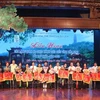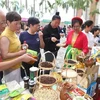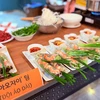 The festival was originally held from the 10th to the 12th day of the second lunar month to pay tribute to the villages’ tutelary gods. (Photo: sovhtt.hanoi.gov.vn)
The festival was originally held from the 10th to the 12th day of the second lunar month to pay tribute to the villages’ tutelary gods. (Photo: sovhtt.hanoi.gov.vn) Hanoi (VNA) – The Ministry of Culture, Sports and Tourism has recognised the festival of the five Moc villages as national intangible cultural heritage, encouraging locals to continue preserving and promoting the festival.
Located along To Lich River, to the southwest of the Dai La citadel, Ke Moc encompasses the five villages of Giap Nhat, Quan Nhan, Chinh Kinh, Cu Loc and Phung Khoang, now belonging to Nhan Chinh and Trung Van wards in Thanh Xuan and Nam Tu Liem districts, Hanoi.
The festival was originally held from the 10th to the 12th day of the second lunar month to pay tribute to the villages’ tutelary gods. However, it was suspended during the wartime.
Since 1992, the festival has been restored and held on a rotary basis, with a major festival taking place every five years.
The highlight of the festival is a dragon dance dedicated to those who made the legendary creature to help Tay Son troops defeat Qing invaders.
Offerings to the tutelary gods include xoi (steamed sticky rice), pork or beef.
Apart from worshiping rituals, the festival features various folk games such as human chess, duck-catching competitions, earthen pot-breaking games, cockfighting, and wrestling.
In the evening of the main festival day, there are a firework display and a Cheo (traditional opera) performance.
According to Luu Minh Tri, President of the Thang Long-Hanoi Cultural Heritage Association, the festival holds intangible cultural heritage values, with various forms, from legends to dragon and lion dances, rituals and food.
Nguyen Huu Do, head of the management sub-committee of the Cu Chinh communal house in Nhan Chinh ward, said the festival plays an important role in locals’ spiritual and cultural life.
It offers a chance for villagers to strengthen their solidarity, he said, pledging efforts to further preserve and uphold the heritage.
To raise awareness of heritage conservation in the local community, the first ever photo contest and exhibition on national tangible cultural heritage was launched on June 9.
According to the Ministry of Culture, Sports and Tourism, the contest seeks valuable photographic works depicting various types of the country's tangible cultural heritage and popularise the cultural, scientific, historical and aesthetic values of the heritages to Vietnamese people and international friends.
The photo contest is opened for both amateur and professional photographers, who are Vietnamese citizens or expats living in Vietnam of 18 years of age and above.
The entries should be submitted until September 30, 2021, either by email to dsvh@bvhttdl.gov.vn, or by post and in person to the Organising Committee at: Department of Cultural Heritage, 51 Ngo Quyen, Hoan Kiem, Hanoi.
Winners of the contest will be announced on the media and the website of the Department of Cultural Heritage.
Prize-winning works and selected entries will be displayed at the exhibition and printed in a photo book with the theme "Vietnam cultural heritage”.
Information about Vietnam’s intangible cultural heritage will be preserved as part of a larger archive of heritage for the Asia-Pacific region.
Director of the Vietnam National Institute of Culture and Arts Studies (VICAS) Bui Hoai Son said the institute had been participating in a project to build ichlinks, a platform with information about the intangible cultural heritage of the Asia-Pacific region.
This project is expected to connect and share content with member countries at the website https://www.ichlinks.com.
“ichlinks stores more than 1,000 data, content and information on the intangible cultural heritage of member countries in the Asia-Pacific region via images, videos, and audio and text formats. The site will offer advanced search tools and information management features,” Son said.
He said that ichlinks was established by the Korean Cultural Heritage Department and the International Information and Networking Centre for Intangible Cultural Heritage in the Asia-Pacific Region (ICHCAP), and supported by UNESCO.
The first group of participating partner countries includes Malaysia, Mongolia, Vietnam (represented by VICAS), Uzbekistan, and Kazakhstan./.
